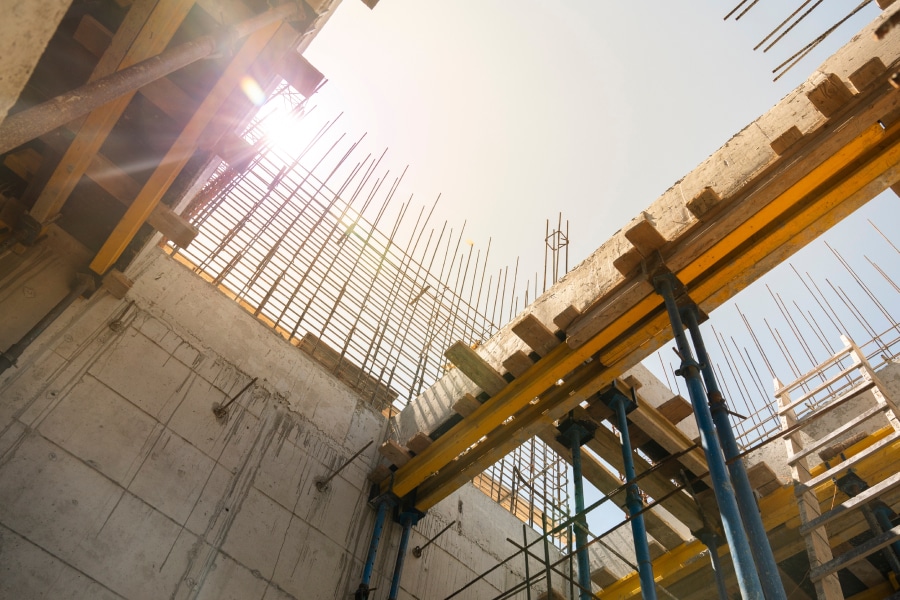Australia’s infrastructure industry plays a central role in building our nation’s growth and economic sustainability.
And the Australian government has decided to leverage the industry to counter emerging economic pressures with its October 2022 commitments to infrastructure investment in a newly released budget.
Designed to ensure that government funds are directed towards industries that generate further investment, infrastructure investment has been targeted at transport to support dispersed industries, communication and emerging industry development.
Importantly, funding in the budget includes more than $28 billion towards 410 ongoing major Infrastructure Investment Program projects in regional Australia, with a further 52 that will benefit regional and urban communities.
Enabling infrastructure—infrastructure that drives regional investment, industry diversification and growth—is central to infrastructure commitments.
A selection of enabling infrastructure programs of work the government is investing in include:
- $1.5 billion in planned equity to build marine infrastructure at the Middle Arm Sustainable Development Precinct near Darwin.
- $440 million in planned equity to build new regional logistic hubs in Katherine, Alice Springs and Tennant Creek in Central Australia.
- $565 million to invest in enabling infrastructure in the Pilbara to support emerging green industries and technologies.
- $7.7 million to develop common-user infrastructure at the Port of Bundaberg in Queensland.
- $100 million to support the Port of Newcastle and the Hunter region to become hydrogen ready.
The pivotal role the infrastructure industry plays
Infrastructure and its associated supporting industries underpin economic and social activity throughout the whole of Australia—from transport to industry to community—including the construction of public assets such as roads and rail, hospitals and schools to private industry development across commercial, retail and residential precincts to support our communities.
From the conceptualisation of infrastructure development, a range of industries benefit directly and indirectly from such investment—including planning and analysis, manufacturing, distribution, construction and more.
As projects develop, a range of industries including finance, project management, legal, accounting, public affairs, governance and more will benefit from programs of work.
The flow on effect
Research from Australia’s Productivity Commission confirms the significant impact and economic stimulus the construction and infrastructure industry creates.
According to the Australian Industry and Skills Committee, the construction industry generates more than $360 billion in revenue, producing around 9 per cent of Australia’s gross domestic product.
Public infrastructure is an important catalyst for economic growth and development. Each dollar of public infrastructure investment can generate GDP increases adding up to $4 of value over the life of the asset.
Investopedia confirms that the strong multiplier effect means that stimulus can be a powerful tool if it can be deployed effectively in a focused way: “Infrastructure spending creates jobs involved in the planning and implementation of various projects. These include both white-collar and blue-collar jobs—for example, both engineers and day laborers are needed. Infrastructure projects often take months to years to complete, meaning that the jobs will stay. These workers then spend their income locally and help stimulate the economy. Moreover, once the projects are completed, citizens can more efficiently use transportation and utilities to improve their worker productivity.”
According to the Productivity Commission, infrastructure investment may have three main effects:
1. Public infrastructure provides a benefit that directly affects private-sector output and productivity.
2. Public or private infrastructure can facilitate product or process innovations and lead to benefits that indirectly affect private-sector output and productivity. It can, for example, be an enabler for innovation, allowing firms to do what they do now in a better way or to do new things.
3. Public or private infrastructure can also affect the productivity of other inputs—it can be a complement to or substitute for these other inputs and affect their productivity. This is often referred to as the ‘factor bias effect’.
How to ensure your construction business benefits from the infrastructure boom
Building a pipeline of work where your construction business is capitalising on the infrastructure boom takes a consistent approach.
Our top tips to position yourself to secure new opportunities include:
- Join key networks. Industry capability networks are often closely connected with all levels of government and major project developers. ICNs comprise experienced industry procurement and supply chain specialists who introduce businesses large and small to projects of all sizes across Australia and New Zealand. Chambers of Commerce exist in various forms across urban and regional Australia. With a broader range of business sectors joining chambers across the country—from sole traders to corporates—you will have the opportunity to build relationships and gain insights from experts across business development, governance, marketing, finance, innovation and more.
- Register your interest. Ensure you receive email alerts for tenders across the regions and scopes of work that your business offers expertise in. For those businesses seeking to capture a wide range of incoming tenders, broader opportunities can be found on sites such as Australian Tenders and TenderLink. However, access comes at a premium. Businesses can also register for alerts directly on the Australian government AusTender site, on state and territory sites and across local government web platforms. With many local and state entities considering buy-local in their weighting towards contracts, you should focus on registering local first.
- Attend industry briefings and pre-bid meetings. Your business will have a front seat to all requirements and will also secure the contact details of key assessors and decision-makers. Pre-bid meetings often offer further insights—including underlying issues or risks, potential opportunities and, importantly, the field of competitors (or even potential partners) in the scope of works at hand.
- Build relationships up and down the value chain. Across all projects, including construction, a collective of experience is required to deliver even the simplest of projects. Value chains and networks can also be used to diversify and future proof supply chains, reduce risks and fast-track delivery.
- Get your house in order. Ensure you have the following plans—and evidence they are being delivered—in place: Business plan, Indigenous Workforce Strategy, Industry Participation Plan, Training and Development Plan. Also ensure your capability statement is current—including testimonials, skills and expertise, and project delivery examples.
- Finally, set yourself up for success. Select opportunities that your business has both the capacity and capability to deliver, build a diverse portfolio and keep an eye on the future while delivering in the present.












